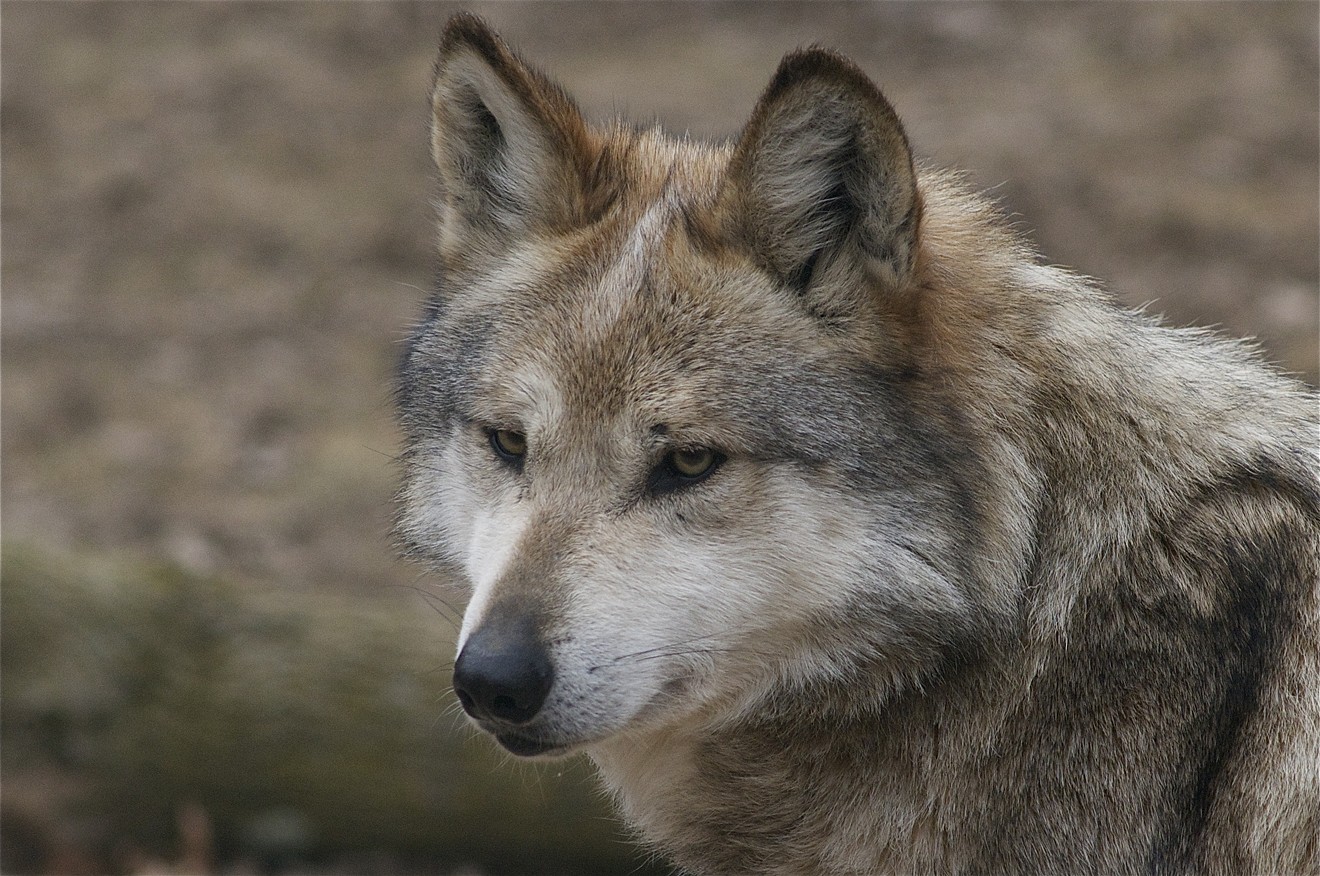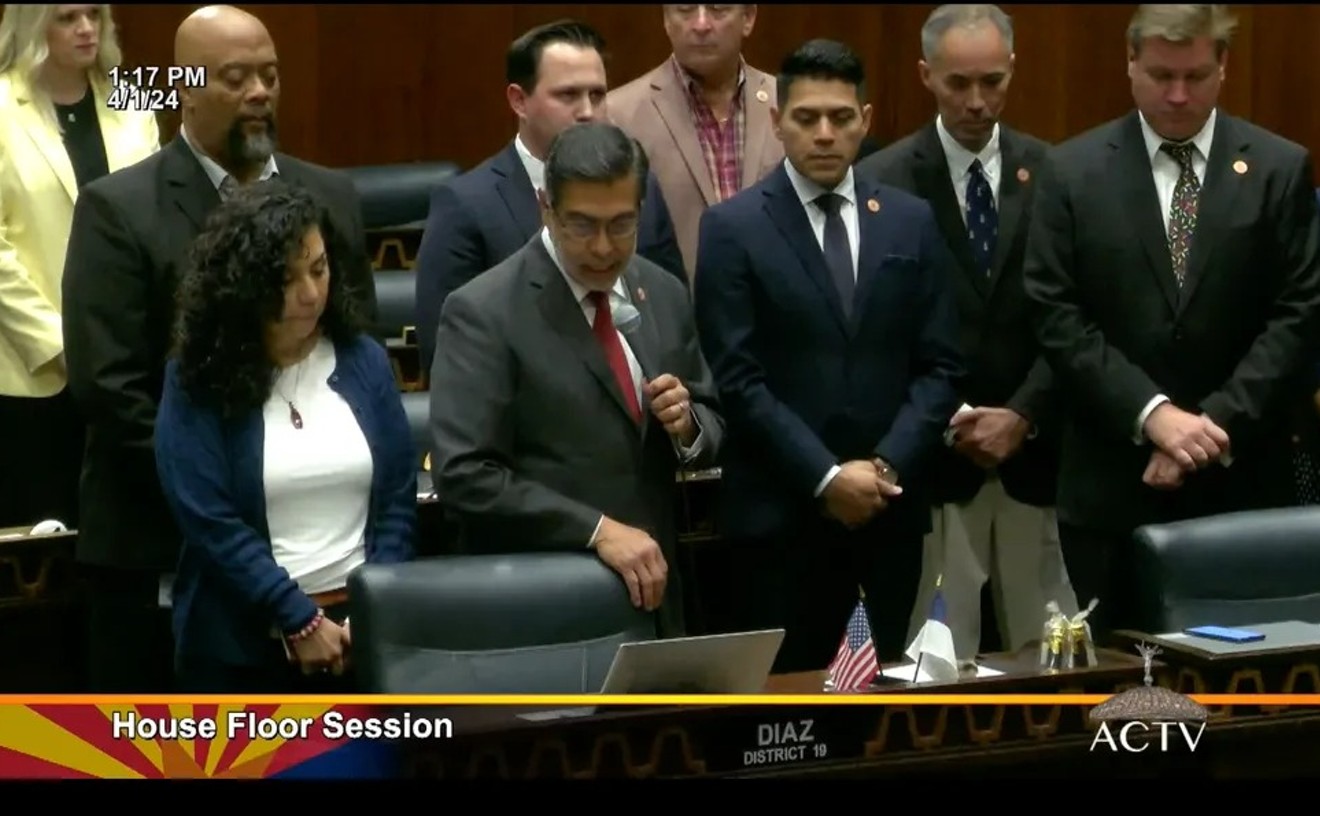By now, wildlife managers had a prime suspect: a lone female Mexican gray wolf with a failing radio collar. To them, the wolf was known as F1557.
But thanks to a contest among kids across the country, the wolf went by another name: Phoenix. It was bestowed when the female wolf was a newborn pup. A fifth-grader had suggested Phoenix was an apt name for a Mexican wolf — after all, the species is inching back from near-extinction in the Southwest.
Federal wildlife managers, however, were unmoved. Three calves were dead, and on June 20 the order came down from the authorities: Phoenix had to be taken out.
Although her radio collar was on the fritz, Phoenix was thought to be somewhere on the Fort Apache Indian Reservation. When she was last seen, the wolf had been traveling alone, and evidence from the carcasses suggested a lone predator was behind the calf killings.
The Southwest Division of the U.S. Fish and Wildlife Service, which chronicled the last days of Phoenix, described the decision to trap and kill the wolf last month as akin to a last resort.
But for conservationists, the death of a single Mexican wolf, a critically endangered species native to the Southwest, is a tragedy.
Phoenix's death in Arizona hit home for advocates, who name each newly born Mexican wolf pup.
Lauren and Ava, fifth-graders, suggested the name Phoenix in the contest, and a Mexican wolf advocacy group chose their selection when the pup was born in 2015. In her letter, Lauren included a drawing of a smiling Mexican wolf, writing, "The Mexican Gray Wolf, like the Phoenix, has risen from near extinction to live again."

Lauren, a fifth-grader, suggested that the Mexican wolf pup should be named Phoenix.
mexicanwolves.org
“It’s such an unnecessary loss to the wolf population,” said Michael Robinson, a wolf advocate with Tucson’s Center for Biological Diversity. “It’s not going to do anything to increase the protection of livestock.”
The wolf was a part of the Diamond Pack, one of many Mexican wolf packs and individuals monitored by state and federal wildlife management agencies, under the requirements of the Endangered Species Act of 1973.
The Santa Fe New Mexican reported that wildlife managers from the Department of Agriculture killed the wolf because of repeated instances of the wolf preying on livestock, according to a monthly report from the Arizona Game and Fish Department. The managers would not discuss how Phoenix was killed.
Robinson said disclosing the wolf’s demise with neutral language in a dull report is no accident.
“When they use the phrase 'lethal control,' it’s to anesthetize the public to the horror of what they did,” he told Phoenix New Times.
John Bradley, a spokesperson for the Southwest division of Fish and Wildlife, said Phoenix and other members of the Diamond Pack were responsible for “excessive livestock depredations” in the area: eight incidents so far in 2017. Members of the White Mountain Apache Tribe had also requested the wolf’s removal, he said.
“We strive to reduce conflicts between wolves and livestock through implementation of proactive conflict avoidance measures and hazing; but these measures don't work in all situations,” Bradley wrote in an email to New Times. “In this case, both trapping and lethal removal were included in the removal order to enable us to quickly respond to the on-going depredations that were occurring.”
The Mexican wolf, also known as the lobo, was decimated during the 20th century as ranchers and federal trappers sought to remove them from the western U.S. In 1998, the government began reintroducing Mexican wolves into the wild in an attempt to bring the species back from the brink of extinction. An interagency count estimates that there were just 113 Mexican wolves in Arizona and New Mexico at the end of last year.
According to Bradley, just 14 wolves have been killed by wildlife managers since reintroduction began in 1998, making Phoenix's death a heavy loss for conservationists. Three Mexican wolves, including Phoenix, have been killed by wildlife managers since 2010. The other two were killed for nuisance behavior, unlike Phoenix's predatory activity.
Wolf advocates say federal agencies have had a free hand to deal with endangered wolves since the Trump administration began. Robinson has taken to studying the Fish and Wildlife Service website, sometimes checking it multiple times a day, afraid that he'll spot a new memo that calls for the removal of a troublesome Mexican wolf.
In particular, conservationists take issue with a proposed reintroduction plan from June that could lower the bar for removing the Mexican wolf from the endangered species list.
An added concern has to do with genetics: Because the population of wild Mexican wolves is so small, the species suffers from inbreeding. Studying their genetics could make or break the recovery effort, but a dead wolf doesn't help in the slightest.
It's also extremely questionable whether killing wolves at the behest of livestock managers does anything to build public support for the species.
"The more there’s a government sanction for the destruction of wolves, the more people take things into their own hands and illegally kill wolves," Robinson explained. "The premise is, we’ll remove wolves for any and all reasons, including livestock predations."
However, Fish and Wildlife's Bradley explained that the agency actively tries to keep wolves away from livestock in order to prevent hungry wolves from becoming a nuisance to ranchers. "We will continue working with livestock producers to implement proactive conflict avoidance measures in this area to address the Diamond Pack," he wrote in an email.
These measures include riders on horseback providing a human presence, attempts to scare off wolves, and diversionary caches of food, Bradley said. His team is also providing funding to livestock producers, covering the transportation costs associated with moving livestock away from areas of wolf pack activity.
Nevertheless, these tactics were not enough to prevent the death of Phoenix. Undeterred, the wolf evidently found the calves of eastern Arizona to be easy prey.
Because of the species’ precarious status, Robinson said anything would have been preferable to killing Phoenix.
“This wolf had a family, this wolf was contributing to the balance of nature, and was contributing to the survival of her kind — which has now taken a setback,” Robinson said.












